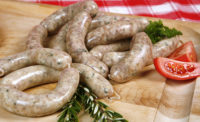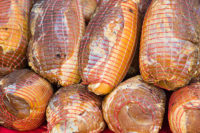Packaging Tech
Casings: The strong survive
Amid so many revenue streams, casings manufacturers are rushing to diversify their product portfolios in order to stand out from the pack and deliver greater value to their processor customers.

There is little room for weakness in today’s casings marketplace, says one industry observer.
“Everyone has gotten better at what they do. The bar has been raised to where the expectation of performance is the same for everybody. Prices have been coming down for the last three years, but have stabilized and, in fact, have increased slightly over the past year.”
That, along with some business consolidation, has helped drive the less fit from the field. The remaining players now target their full attentions to carving out their shares of some serious growth opportunities.
To paraphrase the famous line from “The Graduate”: “One word: pepperoni.” America’s most-often requested pizza topping — 36 percent of all orders request it, according to pizza.com — has become the most significant driver of fibrous casings sales, says our source. In terms of revenue, fibrous is the market’s largest segment and, most likely, will only expand from this good fortune. “I’d say casing sales to the pepperoni segment have grown by 30 percent in the last two years. Just in the last six months, the industry has added 100 million pounds of pepperoni.”
A contributor to this surge was in response to one national chain doubling the pepperoni on its pies. In the spirit of competition, several others followed suit. Add to this our skyrocketing fondness for frozen pizza — an estimated 200 million Americans ate it in 2018, according to Statista — and the outlook of fibrous continues to brighten every day.
In a companion segment, plastic casings’ sales are benefiting from the proliferation of slicing meats. “Deli meats, ingredients meats, chicken rolls, turkey rolls, pork rolls, hot pockets and more; some for retail and some of for deli and restaurant use. On top of that, the growth of sandwich shops is a significant contributor.” In 2018 the sandwich and sub store industry topped $23 billion in sales, according to IBISWorld. The essential nugget here is that almost all of this meat is cooked in plastic. “Keep in mind that casings aren’t really a package even though most of us think of them in that way. Really they are a cooking vessel like pots and pans and molds. The meat only stays in there until it’s cooked.”
Another window has opened with fresh pet food. “The market is growing like crazy. Everybody is getting into some form of extruded pet food. It’s primarily in plastic. Probably every month you see a new end use for pet food in casings.”
Amid so many revenue streams, casings manufacturers are rushing to diversify their product portfolios in order to stand out from the pack and deliver greater value to their processor customers. Collagen, cellulose and plastic are being added to round out offerings and make manufacturers one-stop shops. “As pricing has gone to the basement and begins climbing back up again, processors want their casings supplied by as few vendors as possible.”
Previous innovations in user friendliness, continuous shirred strands and coating variety now coalesce under an umbrella of operational excellence. The ones that can make casings at the lowest cost, while delivering quality and performance, are going to have leverage within the industry. NP
Looking for a reprint of this article?
From high-res PDFs to custom plaques, order your copy today!






